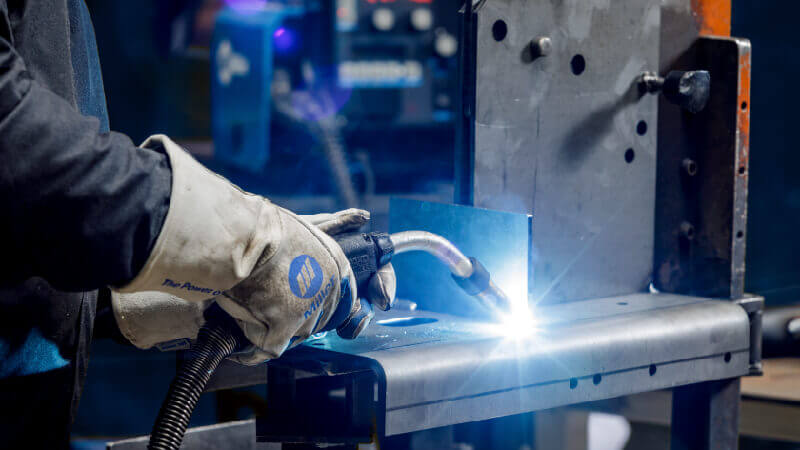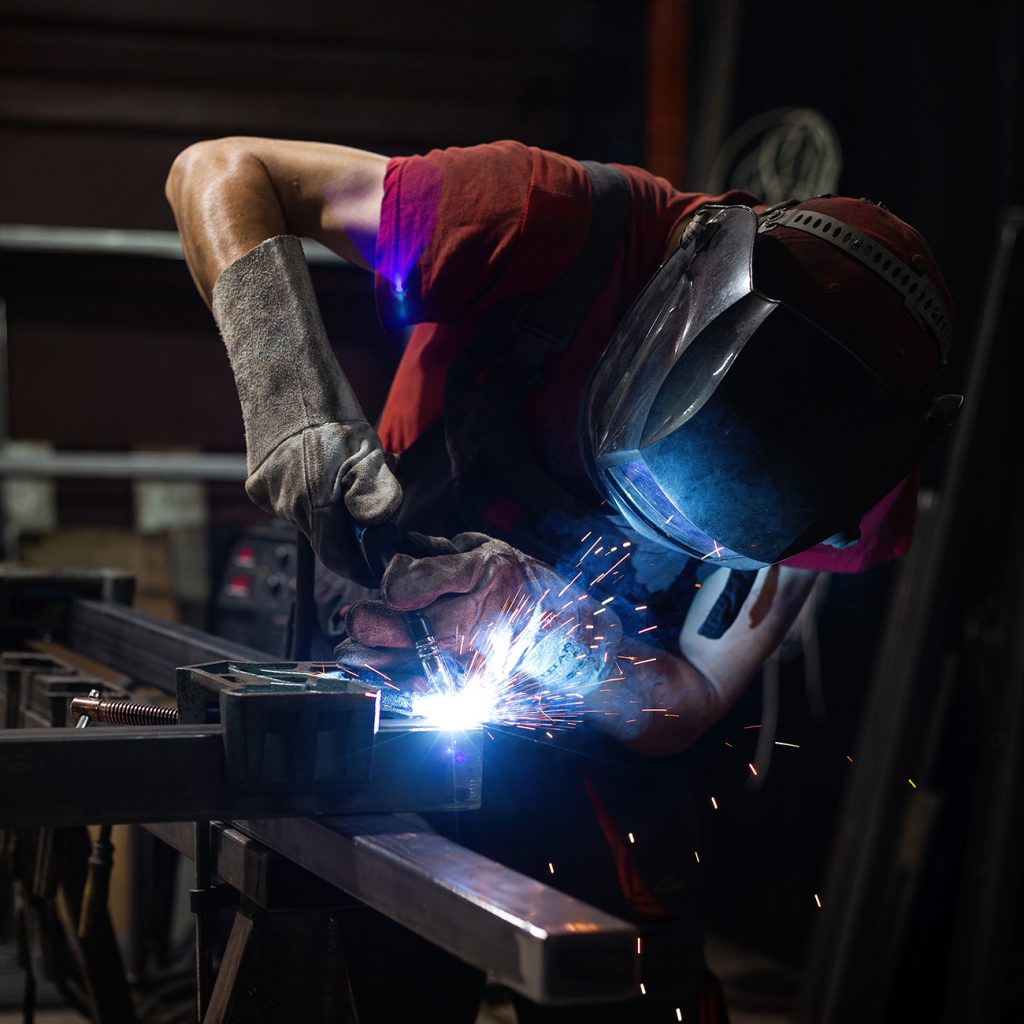Most frequent weld defects handled with care by Belgrade Welding experts
Wiki Article
Common Welding Repair Service Issues and How to Address Them Efficiently
Welding repair work frequently encounter a variety of concerns that can jeopardize the integrity of the last product. Common troubles consist of poor penetration, porosity, and misalignment, amongst others. Each defect presents one-of-a-kind difficulties that need certain strategies for resolution. Recognizing these issues is necessary for welders intending to boost their abilities and end results. This discussion will check out these typical welding repair issues and reliable methods to address them.Inadequate Penetration
Poor infiltration happens when the weld steel falls short to totally fuse with the base product, causing weak joints and possible structural failings. This concern typically comes from not enough warm input, incorrect electrode angle, or inappropriate welding rate. Welders may come across inadequate infiltration due to a mistake of the needed parameters for a particular product thickness or type. Furthermore, contamination on the base material's surface can hinder effective bonding, worsening the issue. To resolve insufficient penetration, welders must ensure suitable settings on their tools and maintain a tidy job surface. Regular evaluation of welds is advised to identify any type of deficiencies early, allowing for prompt improvements and the prevention of compromised structural honesty in bonded assemblies.Porosity
Porosity is an usual problem in bonded joints that manifests as tiny gas bubbles caught within the weld steel. This issue can jeopardize the honesty of the weld, causing minimized toughness and potential failure under stress. Montana Mobile Welding and Repair. Porosity usually develops from contamination, dampness, or improper welding methods, which allow gases to escape into the molten weld pool. To address porosity, welders must assure proper surface prep work, keep a clean working setting, and use appropriate welding parameters. In addition, choosing the best filler product and securing gas can reduce gas entrapment. Normal inspection and screening of welds can aid recognize porosity early, assuring prompt restorative activities are taken, thereby maintaining the quality and integrity of the bonded frameworkImbalance
Misalignment in welding can occur from numerous variables, including inappropriate setup and thermal growth. Comprehending the origin is essential for reliable resolution. Numerous modification strategies are available to realign components and guarantee architectural integrity.Root causes of Imbalance
Welding misalignment usually originates from a selection of underlying problems that can compromise structural honesty. One main cause is inappropriate fit-up of parts prior to welding, which can bring about spaces and uneven surface areas. Variants in thermal growth throughout the welding procedure can additionally lead to distortion, particularly if the materials being joined have various coefficients of development. Additionally, poor securing and fixturing may fail to hold components firmly in position, bring about activity during welding. Improperly conserved equipment, consisting of welding machines and tools, might introduce disparities in the weld bead, more contributing to misalignment. Operator error, stemming from insufficient training or experience, can also play a substantial role in developing misaligned welds.
Improvement Techniques Readily Available
Addressing misalignment properly needs a mix of restorative techniques tailored to the particular problems available. One common approach is using fixtures or jigs to hold parts in the correct placement during welding, ensuring consistent alignment. Additionally, preheating the products can help reduce distortion and improve fit-up. For substantial imbalance, mechanical realignment methods, such as using hydraulic jacks or clamps, can be used to correct the setting prior to welding. Post-weld warmth therapy might additionally be essential to ease stresses brought on by imbalance. Finally, cautious evaluation and adjustment throughout the arrangement phase can stop imbalance problems from ending up being considerable troubles, advertising a smoother welding procedure and boosting general architectural honesty.Distortion
Distortion is a typical challenge in welding that can develop from different factors, including uneven heating & cooling. Understanding the reasons of distortion is vital for applying efficient prevention methods. Addressing this issue not only boosts structural stability yet likewise improves the general quality of the weld.Reasons for Distortion
When subjected to the extreme warmth of welding, materials often undergo changes that can cause distortion. This sensation largely develops from thermal expansion and tightening throughout the welding procedure. As the weld area warms up, the product expands; upon cooling, it contracts, which can create inner tensions. On top of that, unequal home heating across a work surface can aggravate these anxieties, causing warping or bending. The kind of material likewise plays a considerable function; steels with varying thermal conductivity and coefficients of development might respond in a different way, bring about unpredictable distortions. Additionally, inadequate joint layout and insufficient fixturing can add to misalignment throughout welding, enhancing the probability of distortion. Recognizing these reasons is vital for reliable welding repair work and prevention techniques.Avoidance Techniques
Efficient avoidance techniques for distortion during welding concentrate on controlling heat input and guaranteeing proper joint style. Maintaining a constant warm input helps to lessen thermal growth and tightening, which can bring about distortion. Utilizing methods such as preheating the workpiece can likewise decrease the temperature level gradient, promoting uniform heating. In addition, choosing proper joint styles, such as T-joints or lap joints, can improve stability and lower anxiety concentrations. Carrying out proper fixturing to secure the workpieces in location better help in keeping placement during the welding procedure. Staggered welding series can distribute warmth more evenly, protecting against localized distortion. By applying these methods, welders can significantly reduce the probability of distortion and enhance the total high quality of their welds.Breaking
Splitting is a common issue come across in welding repairs, typically resulting from numerous aspects such as improper cooling rates, product choice, or poor joint prep work. The occurrence of splits can greatly compromise the honesty of the weld, resulting in potential failings during procedure. To resolve this problem, welders have to first evaluate the source, ensuring that materials are suitable and appropriately chosen for the details application. Furthermore, regulating the cooling price during the welding procedure is necessary; fast air conditioning can cause stress and lead to fracturing. Correct joint design and preparation also add to reducing the threat. Implementing these approaches can enhance weld quality and sturdiness, inevitably minimizing the possibility More Bonuses of cracking in completed weldments.
Insufficient Blend
A substantial issue in welding repairs is insufficient blend, which takes place when the weld metal does not adequately bond with the base material or previous weld passes - Montana Mobile Welding and Repair. This problem can lead to weaknesses in the joint, possibly endangering the integrity of the welded structure. Aspects contributing to incomplete fusion consist of not enough heat input, inappropriate welding method, and contamination of the surfaces being joined. To resolve this issue efficiently, welders need to assure proper pre-weld cleaning and surface prep work, as well as change their welding parameters to accomplish sufficient penetration and combination. Normal inspection during the welding procedure can additionally assist identify incomplete blend early, enabling timely corrective actions to enhance the overall high quality of the weldOverheating
While welding repair services can boost structural honesty, overheating presents a substantial obstacle that can result in product destruction. Too much warmth throughout welding can alter the mechanical buildings of metals, leading to decreased stamina, increased brittleness, and warping. This phenomenon is especially essential in high-stress applications where structural reliability is vital. Identifying overheating can involve aesthetic examinations for staining or distortion, as well as checking temperature level throughout the welding process. To minimize the risks check my blog connected with getting too hot, welders need to use suitable strategies, such as controlling heat input, readjusting traveling speed, and utilizing appropriate filler materials. In addition, carrying out pre- and post-weld heat treatments can help recover product buildings and improve the overall top quality of the repair, making sure long-term efficiency and safety and security.Often Asked Concerns
What Are the Common Signs of a Welding Issue?

How Can I Examine My Welds for Quality?
To examine welds for quality, one can utilize aesthetic assessments, ultrasonic testing, and radiographic techniques. Each strategy assures structural integrity, determines defects, and confirms adherence to specified criteria, inevitably improving the integrity of the bonded joints.What Security Safety Measures Should I Take While Welding?
When welding, one should focus on safety and security click here for info by putting on ideal individual safety devices, guaranteeing appropriate ventilation, protecting flammable materials away, preserving a tidy office, and recognizing environments to stop crashes and injuries.Can I Repair a Weld Without Renovating the Entire Joint?
Repairing a weld without renovating the entire joint is possible, depending on the damages (Montana Mobile Welding and Repair Fabrication). Methods such as grinding, adding filler material, or using a welding procedure can effectively address particular imperfections while protecting the bordering structureWhat Equipment Are Crucial for Effective Welding Services?
Necessary tools for effective welding fixings consist of a welding maker, wire brush, mill, protective equipment, clamps, and filler products. Each tool plays an essential role in guaranteeing top quality and safety during the fixing process. Porosity usually develops from contamination, moisture, or incorrect welding strategies, which permit gases to run away into the liquified weld pool. Badly conserved devices, including welding equipments and devices, may present variances in the weld bead, more adding to imbalance. When subjected to the extreme heat of welding, materials usually go through adjustments that can lead to distortion. Breaking is a common problem come across in welding repair work, typically resulting from different elements such as inappropriate air conditioning rates, material choice, or inadequate joint prep work. A substantial issue in welding fixings is incomplete fusion, which happens when the weld steel does not appropriately bond with the base product or previous weld passes.Report this wiki page